Sportsman’s Corner: Spring woodcock hunting
| Published: 03-30-2023 2:45 PM |
By Mike Roche
There are spring migratory bird hunting seasons, but they are primarily focused on snow geese, which have become a problem in many states. The snows are growing in number and they are capable of devastating a crop field in a short time. Snow geese feed by uprooting as well, which multiplies the negative impact on agriculture. In response, the U. S. Fish and Wildlife Service has offered spring seasons with a number of restrictions eliminated for the purpose of increasing the harvest of snow geese to aid farmers.
In nearby New York State, the season runs through April 15. The restriction on magazine capacity—three shells for all migratory bird hunting—is removed and the use of artificial calling devices is allowed. Daily bag is 25 geese. Snow geese are harder to hunt and tend to travel in large flocks that are very wary. To be successful, you need a spread of hundreds of decoys to draw the birds’ attention and get them to fly into gun range.
Woodcock can not be hunted in the spring but they do provide a great opportunity to work your bird dog as they return from migrating south. In recent years, the study of American woodcock migration has been bolstered by new technology which allows miniaturization of transmitters and access to GPS technology. The miniature transmitters, about the size of a grape, transmit to a series of orbiting satellites to provide data on the movement of individual woodcock. The once-a-day location sent allows researchers to track migrating movement. This will be a huge benefit to the ongoing woodcock research.
Males usually head north first to lay claim to the best nesting and mating habitat. Once they find suitable conditions like open, wet areas like overgrown farm fields where their favorite food, earthworms, are abundant they try to attract females. They do this by calling and performing their aerial display where they fly straight up and then spiral back down to impress the ladies! Females migrate right behind the males and the game of life goes on.
With a young bird dog and veteran who is on top of her pointing game, the woodcock are a great way for me to train. It is, however, a narrow window and you must stop all running of the dogs in covers when you see first signs of nesting activity or males and females close together. My local experience tells me that the “early birds” arrived a couple of weeks ago in numbers and the migration seems to be in full swing. Almost every cover that we have tried has held woodcock. Laney, with five hunting seasons and contact with hundreds of wild birds, is really good. She has given me solid points and held for multiple flushes. Tessie, just a year old, found her first woodcock and it is clear that she really likes them!
Earlier this week, a call to Ernie LeBlanc enlisted him for a morning trip looking for ‘timberdoodles’ as many refer to woodcock. He has been a friend since we were teenagers and he has a lifetime of serious birdwatching under his belt. He frequently shares his knowledge of birding with others and leads groups organized by the Athol Bird and Nature Club. We set out from his home in Royalston and Laney and Tessie found some woodcock at our second stop, a small Wildlife Management Area that this writer has often driven past and thought might hold birds. Laney’s SportDog upland beeper collar alerted us that she had scented a woodcock and there were three at the seep between some overgrown fields.
Our next cover, also a WMA, produced a quick point where apple trees had been “released” by cutting competing trees and shrubs. When Laney did not move when a woodcock flushed, it meant that another bird was likely still holding. When that woodcock flushed, we were surprised when a Cooper’s Hawk was pursuing the bird as it flew past us. Ernie surmised that the hawk was probably watching a flock of songbirds he saw feeding nearby and saw the woodcock as a potential meal. It appeared he was not able to intercept the woodcock but it was a neat chanced to observe nature unfolding in front of us. All in all, a great morning!
Article continues after...
Yesterday's Most Read Articles
 Orange man gets 12 to 14 years for child rape
Orange man gets 12 to 14 years for child rape
 Athol Police Logs: March 27 to April 10, 2024
Athol Police Logs: March 27 to April 10, 2024
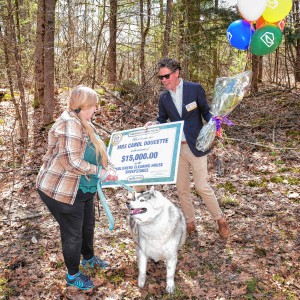 Carol Doucette of Royalston receives $15,000 from Publishers Clearing House
Carol Doucette of Royalston receives $15,000 from Publishers Clearing House
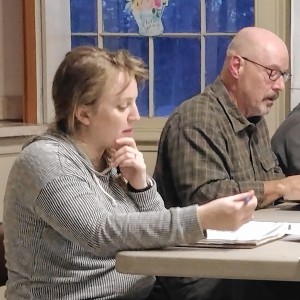 Royalston Selectboard mulls options for full-time police
Royalston Selectboard mulls options for full-time police
 My Turn: A legend made in Iowa
My Turn: A legend made in Iowa
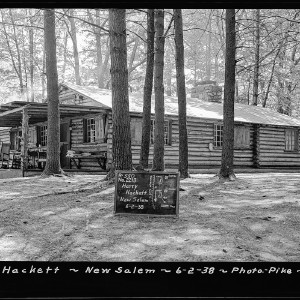 A Page from North Quabbin History: Quabbin Reservoir photo archives
A Page from North Quabbin History: Quabbin Reservoir photo archives
The woodcock season will soon come to an end. Tessie’s training will continue as she is a work in progress. This bird hunter has developed his own training methods which are a blend of the things that are used by authors in the five books on the subject that are my reference library and tips picked up from other hunters and dog trainers over the years. The basics are similar but every “expert” puts their own twist on it. George Darey was a great mentor and Pat Perry at Hedgerow is truly as good as it gets!
Over the years since Pat and his wife Holly established Hedgerow Hunt Club in Royalston, it has been my pleasure to refer to him folks with ‘dog issues’ or who just wanted a good dog trainer. Each one has had great things to say about Pat and his training methods.
After a lot of thought, my decision was to use Pat and Hedgerow to bring Tessie along. Membership at Hedgerow provides use of his grounds and training facilities and his famous training sessions. My garage full of training equipment, including launchers, pigeon traps and cages, dummies and other training aids, but they can sit while we drive to Royalston. So far, Tessie is involved with ‘force fetch’ training plus ‘whoa’ and ‘here/heel’ training. These fundamental commands are part of what is the basis for everything you do with a pointing dog. So far, the student is doing quite well!
Mike Roche is a retired teacher who has been involved in conservation and wildlife issues his entire life. He has written the Sportsman’s Corner since 1984 and has served as advisor to the MaharFish’N Game Club, Counselor and Director of the Massachusetts Conservation Camp, former Connecticut Valley District representative on the Massachusetts Fisheries and Wildlife Board, has been a Massachusetts Hunter Education Instructor and is a licensed New York hunting guide. He can be reached at mikeroche3@msn.com.
]]>

 With eye toward teaching firearm safety, Mahar’s Junior ROTC adding air rifles
With eye toward teaching firearm safety, Mahar’s Junior ROTC adding air rifles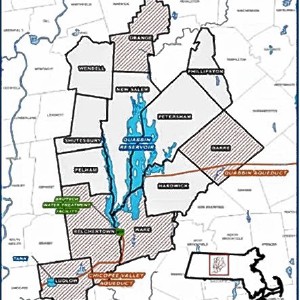 Quabbin region studied for MWRA expansion
Quabbin region studied for MWRA expansion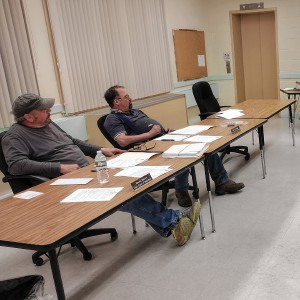 Phillipston board opens talks on new police chief
Phillipston board opens talks on new police chief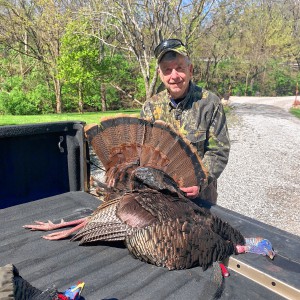 Sportsman’s Corner: Quabbin opens this Saturday
Sportsman’s Corner: Quabbin opens this Saturday